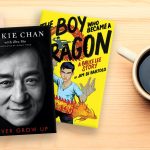I’ve had an up-and-down relationship with the classics. The Great Gatsby, Romeo and Juliet, and The Old Man and the Sea were all required reading for my high school English language arts classes. I graduated from high school with the opinion that much of classic literature was boring, and didn’t relate to my life at all. After graduating from college, I discovered Little Women, 1984, and Rebecca – works that opened my eyes to the beauty of the classics. And about a year ago, I realized that every work of classic literature I had ever read was written by a white author.
There’s much to be said about how people of color have traditionally not been given the opportunities that white people have been given, and about how publishing historically elevated (and continues to elevate) the voices of white authors above authors of color. Movements like #WeNeedDiverseBooks and #ReadWoke have started calling attention to diversity in literature, insisting that we should strive to share the stories of diverse cultures rather than a homogenous body of literature written by and about white people1, 2. Increasing diversity in literature won’t happen on its own. Publishers must intentionally work with diverse authors, allowing them to share stories from diverse cultures. Librarians must intentionally select diverse books to put in their collections. Teachers must intentionally choose to showcase a variety of perspectives when teaching literature.
Mackin offers a variety of title lists to aid in collection development or literature selection. I am one of the librarians who gets to make those lists; as such, I realized that we should curate a list of diverse classics. However, as I started to select titles for the list, I struggled to figure out what “classic” really means in the world of literature. What makes a book a classic, versus any other work of literature? The date of writing was the first thing that popped into my head, as the titles I read in my high school classes were certainly all written long before my time. However, not every book from the 1500s is considered a classic. Furthermore, given the historical discrimination of the publishing industry against authors of color, many diverse books were not able to gain enough renown for us to consider them classics. There are also many novels published in the last few decades that are absolutely classics; few people would debate the presence of The Bluest Eye on a classics shelf. Ultimately, I selected books that I believe will stand the test of time to be considered classic literature. Below are a few of the books that are on our Diverse Classics list. For the full list, go to Diverse Classics.
America is in the Heart by Carlos Bulosan (IL 11-Adult, Penguin, 2020) – The Filipino poet describes his boyhood in the Philippines, his voyage to America, and his years of hardship as an itinerant laborer in the rural West.
The Bluest Eye by Toni Morrison (IL 10-Adult, Vintage, 2007) – Pecola Breedlove is a young black girl who longs for the blond hair and blue eyes that define beauty and acceptance for her. As she yearns to fit in, her life begins to fall apart.
East Goes West by Younghill Kang (IL 11-Adult, Penguin, 2019) – Eighteen-year-old Chungpa Han leaves Japanese-occupied Korea during the early-twentieth-century and arrives alone in New York City. During his travels throughout the United States and Canada, young Han witnesses the shifting values of the industrializing West, commenting on assimilation, greed, racism, and alienation as he works odd jobs to fuel his appetite for knowledge.
Go Tell It on the Mountain by James Baldwin (IL 9-Adult, Vintage, 2013) – During the moral and spiritual awakening of fourteen-year-old John Grimes, the history and secrets of his black family during the Great Depression are revealed.
Invisible Man by Ralph Ellison (IL 10-Adult, Modern Library, 1994) – In the course of his wanderings from a Southern Negro college to New York’s Harlem, an African American man becomes involved in a series of adventures.
My Sweet Orange Tree by Jose Mauro Vasconcelos (IL 9-12, Candlewick Press, 2019) – Five-year-old Zezé lives in a poor neighborhood in Rio de Janeiro and wants to be a poet when he grows up. He is frequently beaten by his parents and tries to find solace anywhere he can, including singing with a street musician and with a magical orange tree. One day he meets the kind Manuel, who shows Zezé what a caring adult looks like, but in growing close to Manuel, Zezé also learns about sorrow. Inspired by the author’s own childhood.
Their Eyes Were Watching God by Zora Neale Hurston (IL 11-Adult, HarperCollins Publishers, 2000) – African American Janie Crawford leaves her nanny’s plantation shack to find herself and “gather in the great fishnet of her life.” She experiences great loves, joys, and sorrows, but finally returns home in peace.
REFERENCES
1 We Need Diverse Books. (2019). WNDB. Retrieved from https://diversebooks.org/
2 Lewis, Cicely. (2018). ‘Read Woke’ school reading challenge makes an impact. Retrieved from https://www.slj.com/?detailStory=read-woke-school-reading-challenge-makes-impact






